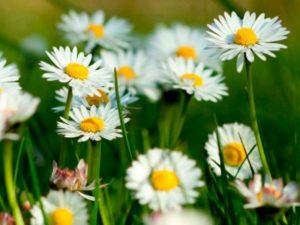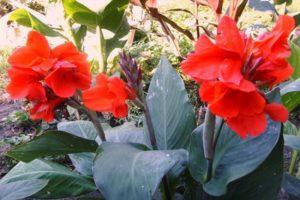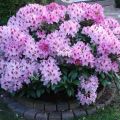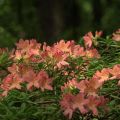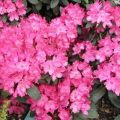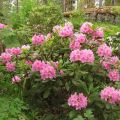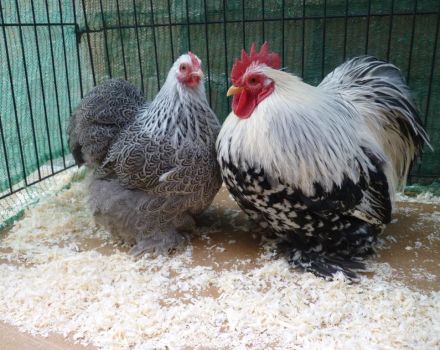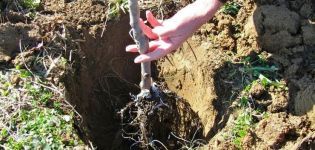How to cover rhododendrons for the winter in the Moscow region, the rules of planting and care
In the Moscow region, the shelter of rhododendrons for the winter is carried out in several ways. You can, for example, sprinkle the plant with peat so that it does not freeze. Beautiful flowers are not very favorable to the winter cold, but much depends on the variety of the shrub, as well as on the characteristics of the climate. As in Siberia, the Urals, and in the Central zone, rhododendrons need a warm shelter.
Why hide
Preparing plantings for cold weather is part of caring for plants that remain on the site. It is carried out in several ways, which allows you to see the flowering of the shrub in early summer.
Rhododendrons do not belong to thermophilic crops, so you should not immediately "hide" them under a film or create another shelter. When the temperature drops below 10 degrees with a minus sign, it is worth starting work.
Why flowers cannot hibernate in their usual conditions:
- In autumn, buds ripen on the shoots, which will then turn into ovaries.
- If you expose an ornamental plant to high (low) temperatures, the buds will dry out and fall off.
Important! To see flowers on the site and enjoy their beauty, you will definitely have to prepare rhododendrons for wintering.
When creating a shelter for shrubs, think about the fact that it should not be too "warm", will do:
- sprinkling with peat, foliage and spruce branches;
- less often synthetic materials and frame structures are used.
The erected shelter is reliable, but lightweight. This will allow rhododendrons that are not too frost-resistant to survive the winter.
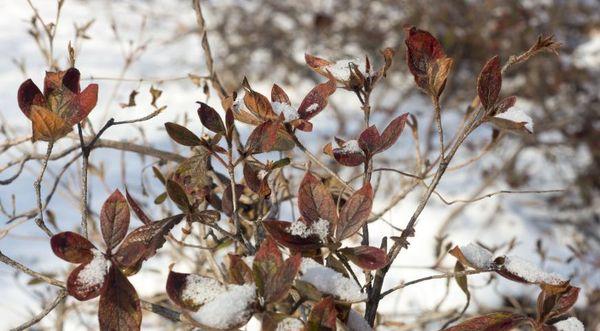
Stages of procedures aimed at preparing for wintering:
- Soil mulching is where to start.
- Cover the base of the bush with coarse sand so that the bark does not melt in spring.
- Tie the bush to a support and sprinkle on it.
All the above manipulations are carried out in mid or late November, when the temperature "outside the window" stabilizes.
Varieties for the Moscow region
Each region has its own climate characteristics, which makes it possible to develop varieties that will successfully endure the "whims of the weather" and at the same time delight summer residents with a harvest or beauty, as is the case with rhododendrons.
If we are talking about the Moscow region, then preference is given to species that are resistant to frost.
Japanese salmon
With large, red flowers, collected in inflorescences of 6-12 pieces. The variety is resistant to frost, reaches a height of 2 meters.

Costerianum
Flowers in this variety have a different shade - from pale yellow to bright red. It was first bred in the 19th century and quickly gained popularity. It is considered a hybrid of the Japanese. The height of the shrub is from 80 centimeters to 2 meters.
Lights Series
Such a plant will decorate any site, since it is decorative and exotic. Red-orange flowers "crown" bushes 2-2.5 meters high.
Hague
The hybrid, bred in Finland, is highly resistant to temperature fluctuations, suitable for growing in humid climates. Winters well in St. Petersburg. The bush reaches a height of 1.5 meters, its crown is decorated with large inflorescences of pink flowers.
Helsinki
The variety was bred in Finland, the event is timed to the 350th anniversary of the University of Helsinki. Will delight the summer resident with flowering, which will begin in early June. The shrub will be decorated with pink-red flowers with wavy edges.
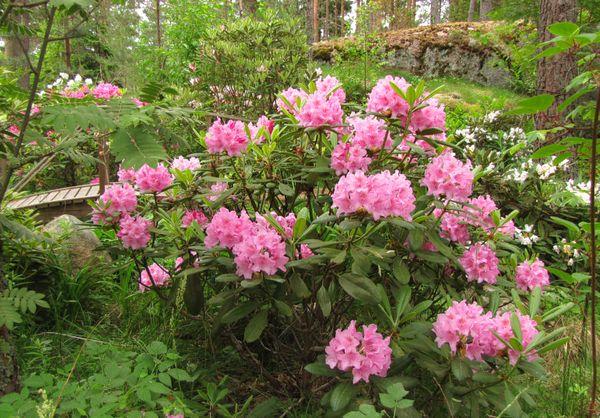
Katevbinsky Grandiflorum
Bred at the beginning of the 19th century, the most popular variety. The bush reaches a height of 3 meters, the crown is 3.5 meters in diameter. It is decorated with lilac-pink flowers. The plant prefers well-drained acidic soils and abundant watering.
Purpurkissen
The height of the bush reaches 90 centimeters, the growing season begins in early June. The plant looks good over the surface of the pond and in tandem with conifers.
Canadian
The variety is unpretentious in care, and due to the blue-blue color of the foliage, it is considered decorative. Blooms for 2 weeks in May. Suitable for planting in shady areas of the garden.
Ledebour
Large flowers of pink-violet color "crown" a shrub 3.5 meters high. The plant begins to bloom at the end of April, this period lasts several weeks.
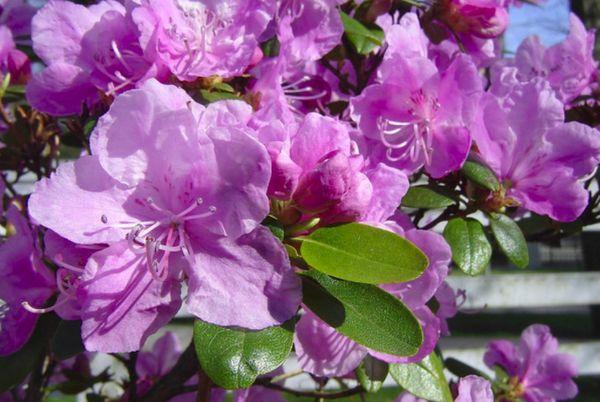
Yellow
The variety is not picky about the soil. It differs in height of 1.5 meters and spreading branches. The yellow flowers adorn the shrub and give off a pleasant scent.
Pink
It is resistant to frost, which is undoubtedly considered as an advantage of the variety, but among the disadvantages is the small size of the flowers. Pink inflorescences will complement the site and will delight the summer resident for several weeks, emitting a wonderful smell. Pink rhododendrons are ideal for growing in mid-latitudes.
Vaseya
The variety is unique in that the flowers appear on a shrub 2 meters high before the leaves. They are somewhat similar to the wings of butterflies, they have no smell. The leaves of rhododendrons are purple.
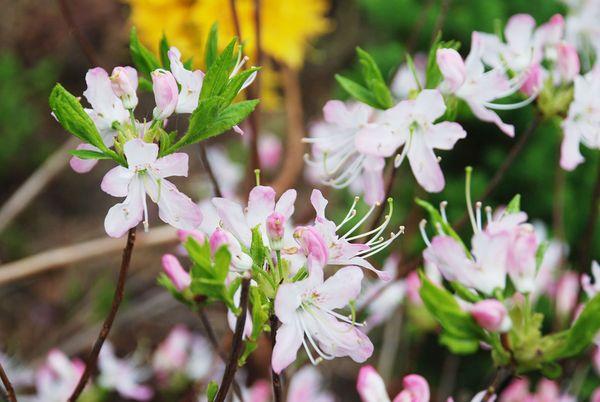
Better to plant the plant in a sunny place; it is a pity that it will not bloom for long - only 2 weeks.
Daursky
It has a superficial root system. The variety was bred in China or India, in the 19th century, the peculiarity of the plant is large lilac flowers, 4 centimeters in diameter.
Smirnova
"Product of domestic production", the variety was bred and named in honor of the doctor and lover of botany - M. Smirnov. The height of the bushes reaches one and a half meters, the flowers are combined into large inflorescences of a purple hue.
Kashkara
Golden yellow rhododendron, with a bush height of 60 centimeters. The leaves are long, slightly curved at the sides.

Schlippenbach
Rhododendron 2 meters high with flowers resembling bells. A lilac shade with purple splashes in the middle. At home, the shrub grows up to 4 meters.
Short-fruited
The plant is native to Korea, reaches a height of 80 centimeters, will delight summer residents with white flowers with golden splashes.
Growing features
Rhododendrons are very whimsical and will delight the summer resident with flowering only if they are provided with the necessary conditions.
Common mistakes gardeners make:
- when transplanting, make the hole too deep, large;
- fertilized after planting with manure;
- provide flowers with abundant watering, forgetting about drainage.
Seat selection
To plant rhododendrons, choose a place where they will have enough sun and warmth, but do not forget that flowers love moisture. Wetlands are suitable provided they are equipped with a drainage system.
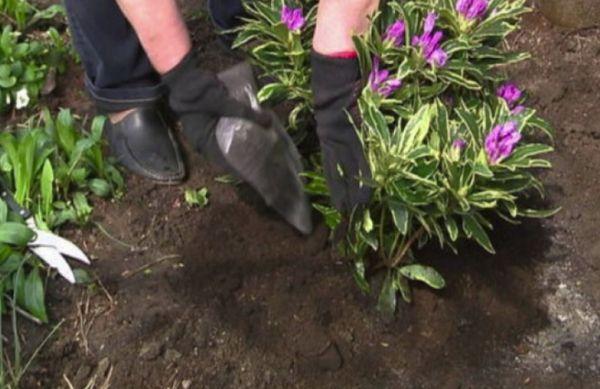
Soil quality
An acidic, crumbly soil with good moisture removal is suitable. But at the same time, you should not allow the soil to dry out.
We prepare the soil for planting, mix:
- Sour peat.
- Pine needles.
- Loam.
The components are collected and mixed in the following proportions: 2: 1: 3
Correct fit
If you are planning to plant or transplant a plant, then follow the rules:
- dig a small hole; since the root system of rhododendrons is compact, no serious "excavations" will have to be carried out;
- fill the hole with the previously prepared mixture (the recipe for a suitable soil is described above);
- tamp it with your hands and leave a small depression for planting a bush;
- Before planting, dip the flower roots in water and keep them there until the little bubbles stop appearing.
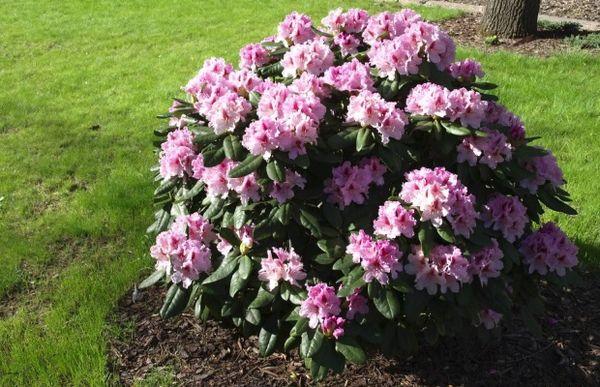
Care
Planting a plant is not enough - you need to take care of it, otherwise it will quickly die. What do we have to do:
- After planting, follow the watering, loosen the soil.
- Do not loosen near the roots - this can seriously damage them.
- Do not forget about top dressing and remove weeds in a timely manner.
Attention! Weed plants are pulled out, but they are not undermining - this way you can damage the root system of the rhododendron, as a result of which the flower will die.
Top dressing
The procedures are carried out in June and July, but in August it is not worth touching the rhododendrons. For these plants, fertilizing with a prolonged effect is not used, since this can lead to the fact that in late August, early September, the shrub will again begin to prepare for flowering.
The first
Carried out after planting in the ground, you can use mineral fertilizers.
The second
We repeat the procedures after 2 weeks: we give preference to mineral fertilizers or specialized products in granules.
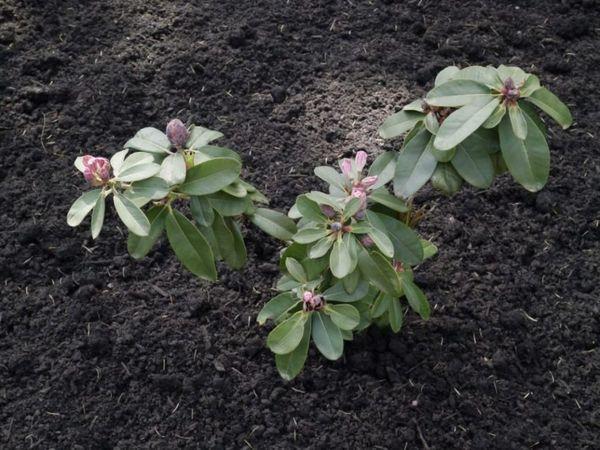
Third
After another 14 days, we repeat all the manipulations; it is better to give preference to granular mixtures. The granules are scattered directly around the root system of the shrub.
Watering
Rhododendrons love water, they respond well to abundant watering. But stagnant moisture can seriously damage them. Consider drainage to prevent this from happening. It is better to water the flowers with soft, river or rain water. In August, watering is reduced - this will prevent the appearance of new branches on the bush.
Protection against diseases and pests
When planting a crop on a site, do not forget that it is susceptible to fungal diseases. As part of the prevention of such infections, treat rhododendrons with copper sulfate and special solutions.
What pests affect plantings:
- snails;
- spider mites;
- scabbards;
- weevils;
- bed bugs;
- flies.
The use of specialized selective preparations, which can be purchased at gardening stores, will help to rid the plant of insects.
How to prepare for winter
In order for flowering bushes to successfully survive the winter, you will have to prepare for it. The procedures take place in several stages, they have their own characteristics.
Top dressing
Wintering takes place without the use of fertilizers. The last time the plant is fed at the end of July. In August and September, they refrain from such manipulations so that young shoots do not appear on the bushes, which are unlikely to survive the winter.
Watering
The number of irrigation procedures is reduced in August, in winter rhododendrons should not be watered.
Mulching
The procedure is considered mandatory; it is carried out 2 times: in autumn and spring.
Defrost water groove
Since the culture is not very supportive of stagnant water, it is better to build ditches along which excess moisture and wastewater will go.
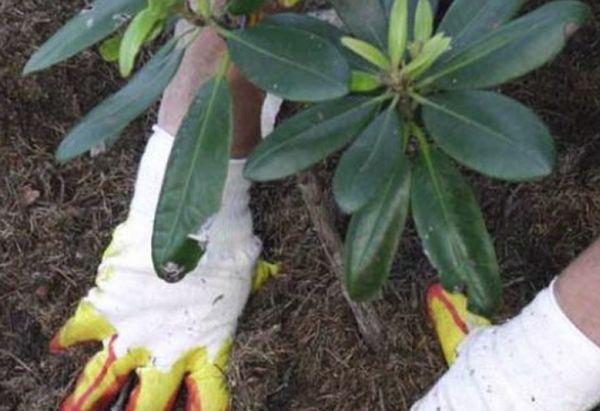
Ditches are built between plantings; it is not recommended to make them next to the plant - there is a risk of damaging the roots.
Shelter
The bushes of rhododendrons are covered with non-woven fiber, foliage, branches of conifers can be used. It is allowed to sprinkle plants with peat, build houses, frame structures.
Timing
The bush "hibernates" from mid-November to late March, early April.
But the procedures for feeding and watering are stopped at the beginning of August. And they resume in mid-April, early May (watering), fertilizers are used in June-July.
How to cover
Alternatively, you can create arcs that are located above the plant. The arcs are covered with a non-woven fabric. In the cold, the edges of the shelter are poured with earth to avoid the ingress of cold air.
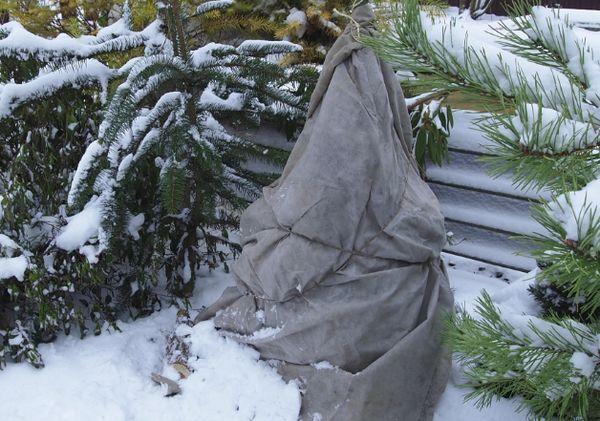
Deciduous
Since this type of culture tolerates frost well and is frost-resistant, it is not necessary to build shelters. It is enough to sprinkle the root system of the plant with peat, leaves or branches of coniferous trees.
Evergreen and semi-evergreen
Such rhododendrons tolerate frosts worse, so houses or frame shelters are built for them using insulation (foam is ideal).
They cover not only the bush, but also its root system - if the roots freeze, the plant will die. The shelter must be equipped with a frame, otherwise it will collapse under the weight of the snow and break the bush. The shelter is removed gradually: in early March, after the snow melts, the rhododendrons are removed from most of it, in mid-April or early May, they are removed completely. This will allow the plant to adapt.
When and how to replant
All manipulations are carried out when warm weather is established outside. Transplanted into a specially prepared hole measuring 40 centimeters (depth) by 60 (diameter). The landing is planned for mid-May.
Reviews
Gardeners of the Moscow region shared their opinions and advice on the care and wintering of rhododendrons:
- Victoria Sokolova: “I grow several varieties of rhododendrons on the site, preferring evergreens. I cover them with a special bag, but at the same time I choose a place in the open sun. Not a single plant has frozen yet. "
- Igor Parnasov: “I give preference to frame shelters, I warm them with spruce branches, and it looks like a hut. And my neighbor covers the plantings with boxes. "
- Irina Aksenova: “I live in the Leningrad region and grow species rhododendrons, I don’t cover them in any way. Due to the high humidity of the air, they perfectly tolerate cold. "
Having decided to plant rhododendrons on the site, do not forget that the plant needs care. Planting needs to be watered, loosened up the soil, and built shelters. Otherwise, despite its resistance to frost and unpretentiousness, the shrub may die.
